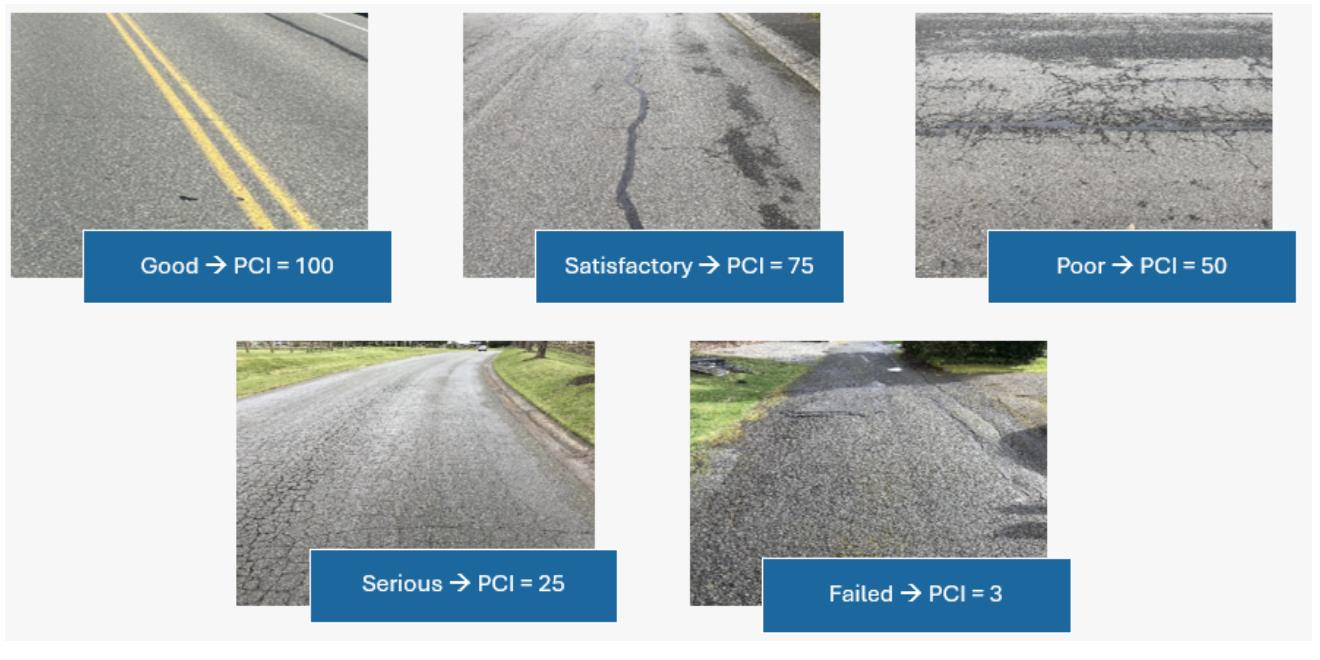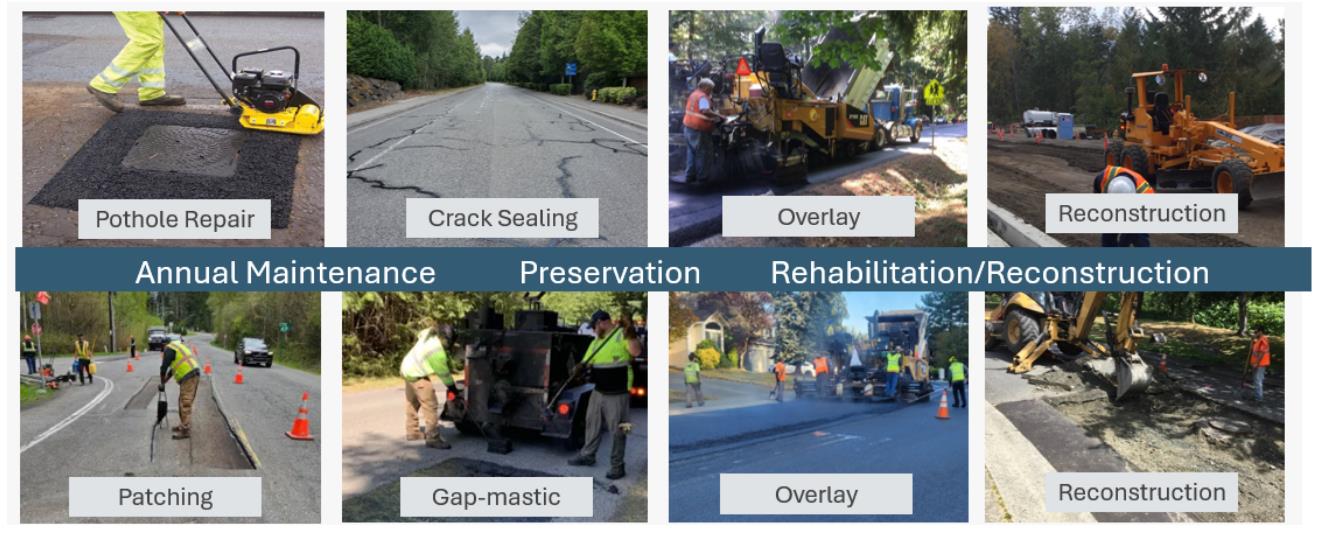2025 Pavement Management Strategic Plan

Project Summary
The City of Sammamish will be performing a new citywide Pavement Condition Assessment (PCA) to measure key parameters of pavement condition and update the Pavement Condition Index (PCI) values for all road segments in the City. The data collected from the PCA will be integrated into the City’s new pavement management software, Pavement Express, and be used to calculate which preservation and rehabilitation methodologies to use to provide the City with the greatest return on investment.
These findings will be summarized in the City's first Pavement Management Strategic Plan (PMSP). This plan will also outline the overall condition of the City’s roadway network, provide pavement performance models, funding strategies and cost analysis, project prioritization and selection criteria, and a 5-year implementation plan.
This project is part of the City of Sammamish Pavement Management Program, which provides major street maintenance of roadways. This maintenance include street overlays, pavement rehabilitation, curb and sidewalk repair and appropriate Americans with Disabilities (ADA) retrofit work. Pavement overlay projects also replace pavement markings and vehicle detection loops for traffic signals. For more information on the Pavement Management Program, visit the link below.
https://www.sammamish.us/projects/pavement-management

Project Updates
July 25, 2025
The consultant is set to begin the field work portion of this project in late-August. The data collection will last for about 1 to 2 weeks. Please continue to check the project website for updates.
Project Timeline
The timeline below is approximate and is subject to change.
|
Milestone |
Anticipated Date |
|
Project Initiation |
October 2024 |
|
Pre-Engineering |
November - December 2024 |
|
Bidding & Contract Negotiations |
January - July 2025 |
|
Pavement Condition Assessment |
September 2025 |
|
Data Analysis & Integration |
September - December 2025 |
|
Community Engagement |
January 2026 |
|
Pavement Management Strategic Plan |
February 2026 |
Pavement Condition Assessment (PCA)
What is a Pavement Condition Assessment?
A Pavement Condition Assessment (PCA) is a process used to evaluate the current state or health of a pavement (such as roads, highways,). It helps transportation agencies and engineers determine maintenance needs, prioritize repairs, and manage pavement assets effectively.
The assessment is performed using an automated system (e.g., camera-equipped survey vehicle) that looks for cracking (alligator, longitudinal, transverse), potholes, rutting, and raveling in the road. Each road segment is then assigned a PCI value based on its condition.
What is PCI?
Pavement Condition Index (PCI) is a numerical rating system used to assess the overall condition of a pavement surface, such as roads or parking lots. It ranges from 0 to 100, where 100 means the pavement is in perfect condition and 0 means the pavement has completely failed.
What is the Purpose of PCI?
The PCI helps engineers and decision-makers evaluate current pavement conditions, prioritize maintenance and rehabilitation projects, and allocate budgets more efficiently.
How is it Determined?
PCI is calculated through automated systems that evaluate the types of distresses in the pavement sections (cracks, potholes, rutting), the severity of each distress (low, medium, high), and the extent of the distress (how much area is affected).

Pavement Management Strategic Plan
What is a Pavement Management Strategic Plan?
A Pavement Management Strategic Plan (PMSP) outlines how an agency or organization will monitor, maintain, and invest funds to extend the lifespan of its roadway network and to optimize maintenance costs.
What are the Key Objectives of the PMSP?
- Maximize pavement life
- Minimize long-term costs
- Prioritize repair and rehabilitation efforts
- Ensure safety and ride quality
- Support budget planning and funding justification
What are the Core Components of the PMSP?
1. Pavement Inventory
Type, length, width, age, and location of roads
2. Condition Assessment
Calculate the PCI of each road segment
3. Performance Modeling
Forecast pavement deterioration over time
4. Maintenance & Rehabilitation Strategies
Routine maintenance (crack-sealing)
Preventive maintenance (patching)
Rehabilitation (pavement overlays)
Reconstruction (rebuild entire road section)
5. Budgeting & Cost Analysis
Evaluate life-cycle cost of different treatments and match maintenance strategies with available funding
6. Prioritization
Rank projects based on a certain selection criteria, such as road classification, proximity to high-use areas, and equitable investment factors
7. Implementation Plan
Develop a 5-year maintenance schedule
8. Monitoring & Updating
Regularly update the PMSP as conditions, budgets, or policies change

